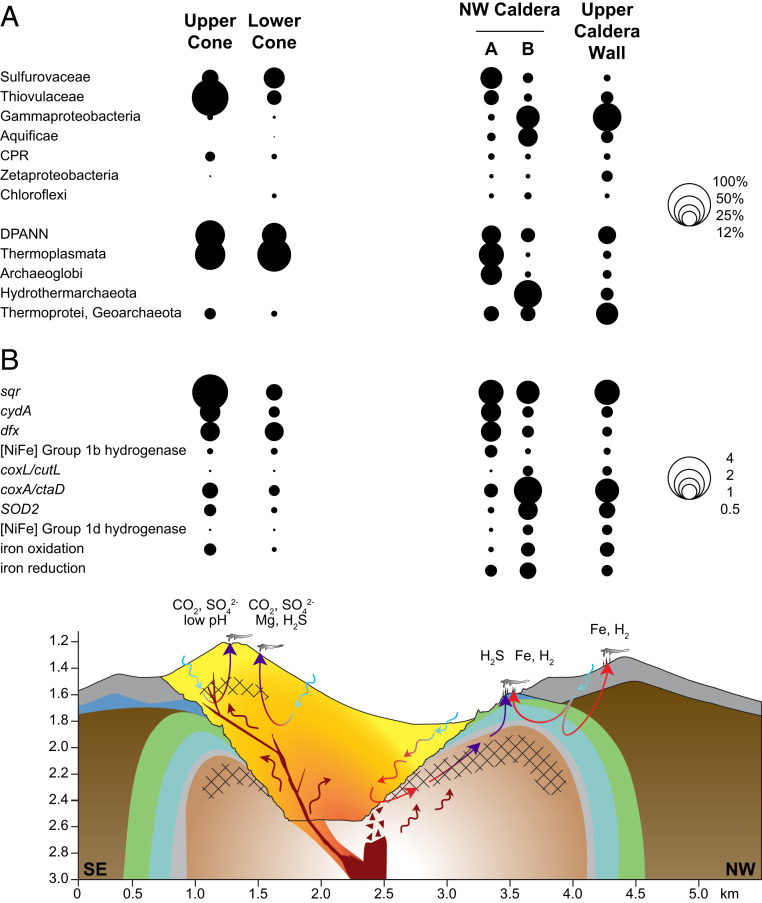Fig. 6.
The proposed influence of subsurface hydrogeological processes on the microbial phylogenetic and functional diversity associated with Brothers volcano and its hydrothermal systems. Schematic cross-section adapted from de Ronde et al. (9) from southeast to northwest. Overall, the shallow subsurface is influenced by seawater-dominated hydrothermal circulation (blue arrows = recharge; red arrows = discharge). Recharge of seawater occurs both at a volcano scale through the caldera floor and faults along the caldera wall and more locally at the 100- to 200-m scale at the vent sites [see Caratori Tontini et al. (35)]. Red arrows denote heated (modified) seawater after reaction with the rocks; purple arrows represent hot, magmatically influenced fluids; red-brown arrows represent magmatic volatiles. Cross-hatching represents zones of inferred magmatic salt [see de Ronde et al. (9)]. (A) Bubble plots of the average relative abundance of key taxa (NCBI taxonomy) amplicons discussed in the text from each area are shown, with bubble size corresponding to percent average relative abundance (Dataset S1C; UC, n = 3 samples; LC, n = 2 samples; NWC-A, n = 6 samples; NWC-B, n = 3 samples; UCW, n = 2 samples). The average relative abundance of Archaea was calculated separately using only archaeal taxa, and bubble size represents the percent average relative abundance of Archaea (UC, n = 2 samples; LC, n = 2 samples; NWC-A, n = 6 samples; NWC-B, n = 3 samples; UCW, n = 2 samples). (B) Associated enrichment of key functional genes where bubble size corresponds to relative abundances as described for Fig. 3A (Dataset S2B), averaged across samples at each area. Enrichment of carbon dioxide (CO2), sulfate (SO42−), magnesium (Mg), hydrogen sulfide (H2S), iron (Fe) and hydrogen (H2) and pH shifts are shown for each site (Dataset S1B). The combination of different geochemical environments intersected by the circulating hydrothermal fluids, and different scales of recharge, may explain some of the shifts in diversity of the microbial communities observed at Brothers volcano.

